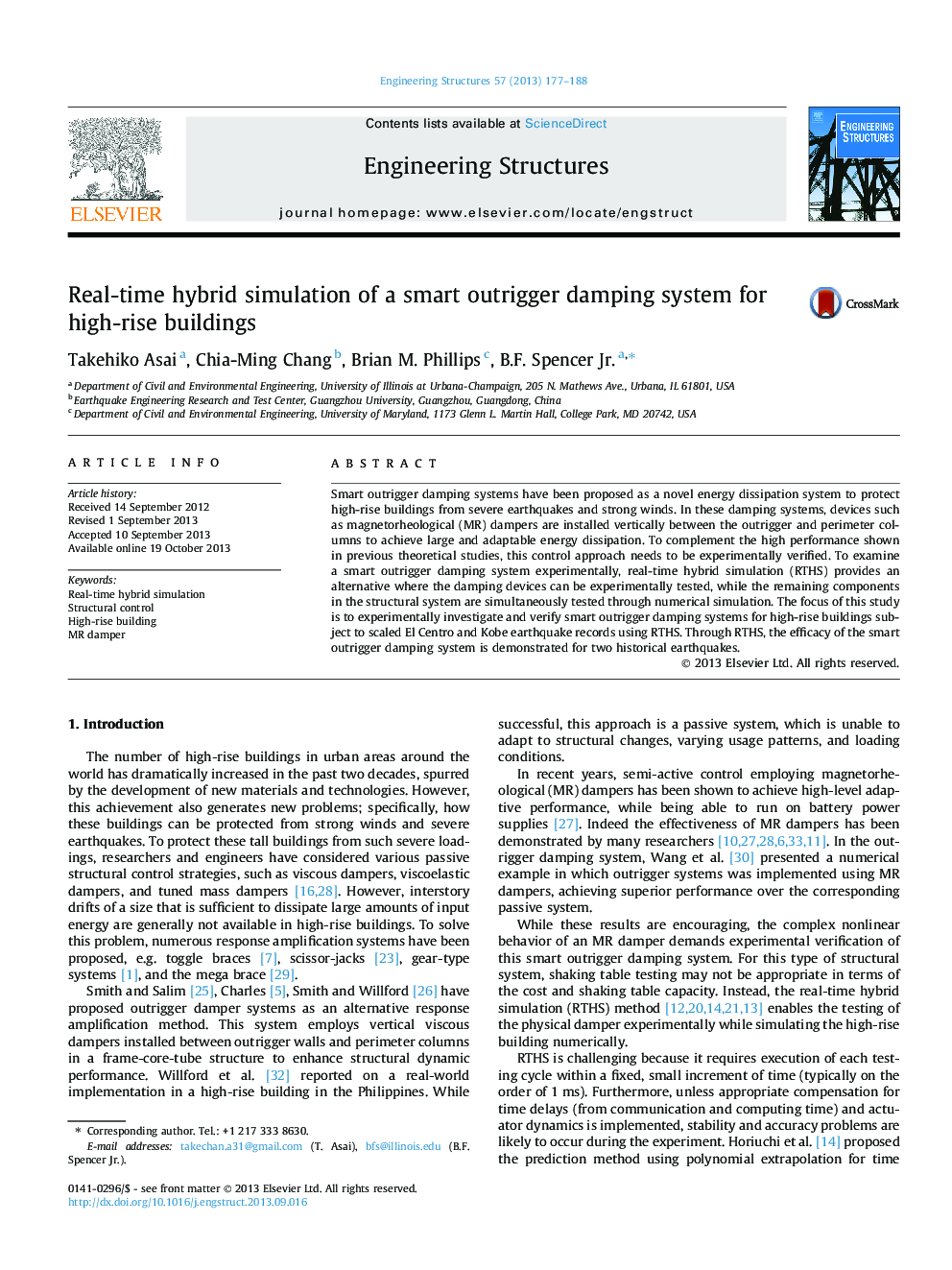| Article ID | Journal | Published Year | Pages | File Type |
|---|---|---|---|---|
| 6741065 | Engineering Structures | 2013 | 12 Pages |
Abstract
Smart outrigger damping systems have been proposed as a novel energy dissipation system to protect high-rise buildings from severe earthquakes and strong winds. In these damping systems, devices such as magnetorheological (MR) dampers are installed vertically between the outrigger and perimeter columns to achieve large and adaptable energy dissipation. To complement the high performance shown in previous theoretical studies, this control approach needs to be experimentally verified. To examine a smart outrigger damping system experimentally, real-time hybrid simulation (RTHS) provides an alternative where the damping devices can be experimentally tested, while the remaining components in the structural system are simultaneously tested through numerical simulation. The focus of this study is to experimentally investigate and verify smart outrigger damping systems for high-rise buildings subject to scaled El Centro and Kobe earthquake records using RTHS. Through RTHS, the efficacy of the smart outrigger damping system is demonstrated for two historical earthquakes.
Related Topics
Physical Sciences and Engineering
Earth and Planetary Sciences
Geotechnical Engineering and Engineering Geology
Authors
Takehiko Asai, Chia-Ming Chang, Brian M. Phillips, B.F. Jr.,
